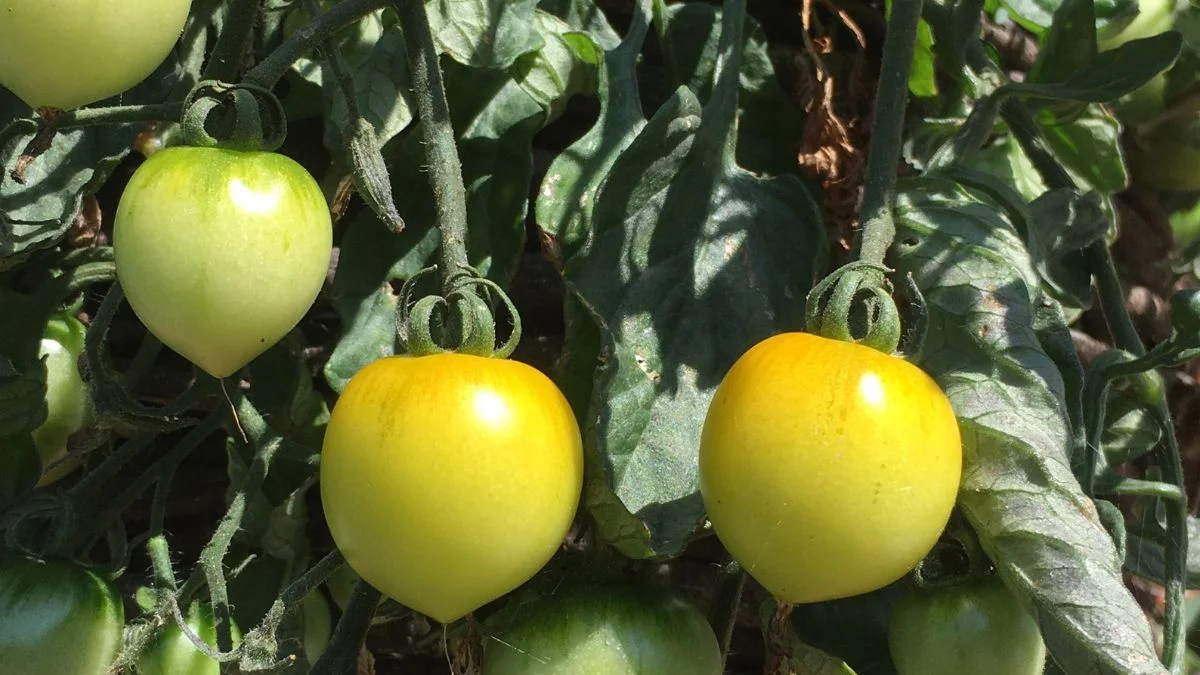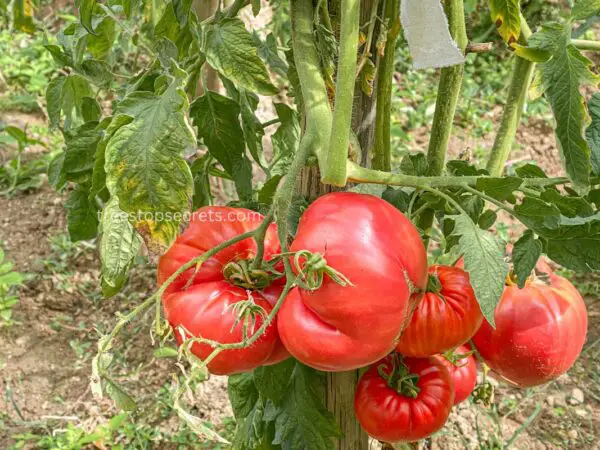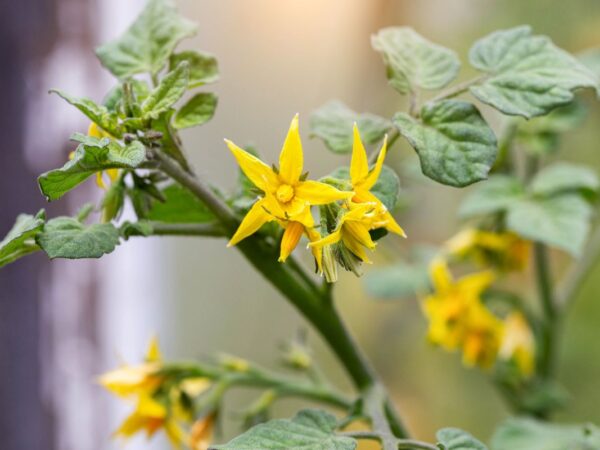Are your tomatoes turning yellow, and you're not sure why? Don't worry, you're in the right place! We'll delve into the common reasons behind why your tomatoes might be taking on a yellow hue and provide expert advice on how to address the issue effectively.
Tomatoes turning yellow can be attributed to various factors, including nutrient deficiencies, watering irregularities, pest infestations, and diseases. One common culprit is nitrogen deficiency, which can cause the lower leaves of the plant to turn yellow first. Additionally, overwatering or underwatering can stress the plants, leading to yellowing of the leaves and ultimately affecting fruit production. Pests like aphids and whiteflies can also cause damage to the plants, resulting in yellowing leaves.
Furthermore, diseases such as fusarium wilt or tomato yellow leaf curl virus can manifest as yellowing of the foliage. By carefully assessing your tomato plants and addressing any underlying issues promptly, you can help prevent further yellowing and ensure a bountiful harvest.
If you're experiencing yellowing tomatoes, don't despair! Understanding the potential causes is just the first step. There's a wealth of information available on how to properly care for your tomato plants, from optimizing soil health to implementing effective pest management strategies. By exploring these additional resources, you'll be equipped with the knowledge and tools necessary to nurture your tomato plants back to vibrant health and maximize your yield.
Key Takeaways
- Regularly check soil moisture to ensure proper watering and prevent yellowing of tomatoes.
- Maintain a balanced nutrient regimen by providing adequate fertilization to promote healthy tomato growth.
- Implement disease prevention measures such as proper sanitation and using disease-resistant tomato varieties.
- Adopt pest control strategies like handpicking pests and using organic insecticides to protect tomatoes from damage.
- Make necessary environmental adjustments such as providing sufficient sunlight and good air circulation for thriving tomato plants.
- Follow transplant care guidelines to minimize stress on tomato plants during the transplantation process.
Yellowing Causes
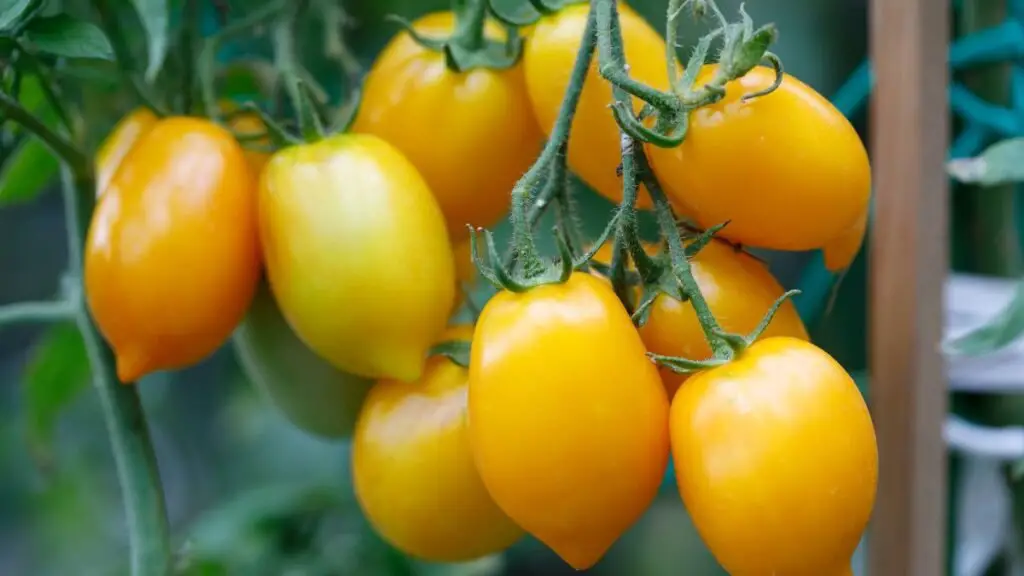
Watering Issues
Adjust watering frequency based on weather conditions. Use mulch to retain soil moisture, helping prevent yellowing leaves. Check soil moisture levels regularly to ensure proper hydration for the tomato plants.
Nutrient Deficiency
Consider using organic fertilizers to improve nutrient absorption and address deficiencies causing yellow foliage. Monitor plant growth for signs of nutrient deficiency, such as stunted growth, pale leaves, or yellow leaves. Test soil to identify specific nutrient needs and provide targeted solutions for healthier tomatoes.
Tomato Diseases
Look out for common diseases like blights and mildew, which can lead to yellow spots on leaves. Practice crop rotation to prevent disease spread and maintain plant health. Opt for disease-resistant tomato varieties to minimize the risk of infections causing yellowing.
Pest Infestations
Inspect plants regularly for signs of pests like aphids or caterpillars that may cause yellowing leaves. Introduce beneficial insects such as ladybugs or lacewings for natural pest control in the garden. Apply organic pest control methods like neem oil or insecticidal soap to manage pest infestations effectively.
Environmental Stressors
Protect plants from extreme temperatures by using shade cloth during hot days to prevent leaf scorching and yellowing. Provide wind protection for tomato plants to avoid physical damage that can lead to yellow foliage. Avoid planting in areas prone to flooding, as waterlogged soil can stress the plants and cause yellow spots on leaves.
Watering Solutions
Drip Irrigation
Drip irrigation systems efficiently deliver water to tomato plants, reducing the risk of overwatering. Adjust drip emitters according to the specific water requirements of each plant. This method minimizes water wastage and ensures that plants receive just the right amount.
Proper maintenance of drip irrigation systems is crucial to prevent issues like clogging or uneven watering. Regularly check for leaks and clogs in the system to maintain its efficiency. By addressing these problems promptly, you can ensure consistent and adequate water supply to your tomato plants.
Proper Techniques
Staking or caging tomato plants provides essential support as they grow, preventing them from bending or breaking under the weight of fruits. Proper support also helps in maintaining good air circulation around the plants, reducing the risk of diseases caused by excessive moisture.
Pruning tomato plants involves removing unnecessary branches and leaves, allowing the plant to focus its energy on fruit production. This practice not only improves air circulation but also helps in preventing diseases such as blight. By pruning regularly, you encourage healthy growth and increase fruit yield.
Training tomato vines involves guiding them along a trellis or support structure as they grow. This technique helps in maximizing space utilization and sunlight exposure for each plant. By training vines properly, you promote efficient growth and ensure that fruits develop evenly across the plant.
Nutrient Management
Fertilizing Tips
Use a balanced fertilizer containing essential nutrients like nitrogen, phosphorus, and potassium to promote healthy tomato growth. Applying fertilizers at the base of plants ensures direct absorption by the roots for optimal nutrient uptake. Avoid over-fertilizing, as excessive nutrients can lead to yellowing leaves due to nutrient imbalances.
Soil Testing
Regular conducting soil tests is crucial to determine the nutrient levels in your soil and adjust fertilization accordingly. Adjust pH levels based on test results to create an ideal environment for tomato plants. Incorporating organic matter such as compost or well-rotted manure helps improve soil structure and fertility.
In the previous section on "Watering Solutions," we discussed the importance of providing adequate moisture for healthy tomato plants without causing water stress. When it comes to nutrient management, ensuring your tomatoes receive the right balance of essential nutrients is key to preventing issues like yellowing leaves.
One advantage of being proactive with fertilizing tips and soil testing is that you can address nutrient deficiencies before they impact plant health significantly. By using a balanced fertilizer and conducting regular soil tests, you can optimize nutrient levels for your tomatoes' growth.
- Balanced fertilizer promotes healthy growth
- Direct application at the base enhances absorption
- Avoid over-fertilizing to prevent imbalances
l testing provides valuable insights into your soil's nutrient composition, allowing you to make informed decisions about fertilization. Adjusting pH levels based on test results ensures that your tomatoes can access nutrients efficiently.
- Use balanced fertilizer
- Apply at plant base
- Regularly conduct soil tests
Disease Prevention
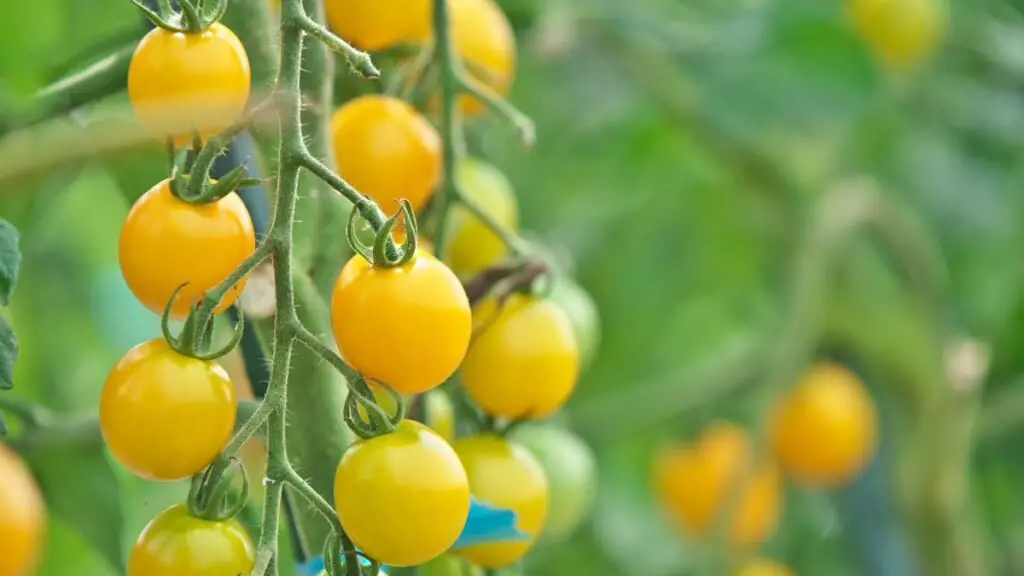
Identifying Blights
Tomato blight diseases, such as early blight and late blight, can cause yellowing leaves with dark spots. Recognize these symptoms early to prevent further spread. Properly spacing tomato plants helps minimize the risk of blight by improving air circulation. Promptly remove any infected plant parts to prevent the disease from spreading.
Managing Mildew
Increasing air circulation around tomato plants is crucial in reducing the risk of mildew. Apply fungicides preventively to protect plants from mildew infection. Overhead watering should be avoided as it can aid in the spread of mildew spores.
Fusarium Wilt
Opt for tomato varieties that are resistant to Fusarium wilt to safeguard your plants against this soil-borne disease. Good sanitation practices, such as cleaning gardening tools, help prevent the transmission of Fusarium wilt. Rotating crops annually assists in reducing the buildup of pathogens in the soil.
Pest Control Strategies
Natural Remedies
Neem oil, known for its natural pest repellent properties, can help deter common tomato pests like aphids and whiteflies. It is an effective and eco-friendly solution.
Compost tea serves as a nutrient-rich fertilizer for tomatoes, promoting plant health and resilience against pests and diseases. Regular application can enhance soil quality.
Introducing companion plants such as basil or marigold can attract beneficial insects like ladybugs and lacewings that prey on harmful pests. This natural method promotes biological pest control.
Chemical Treatments
When facing severe disease outbreaks, consider using copper-based fungicides to combat fungal infections in tomato plants effectively. These fungicides are effective against blights.
Always follow the manufacturer's instructions diligently when applying chemical treatments to avoid overuse or incorrect application. Proper handling ensures the safety of both the plants and the environment.
Consulting with gardening experts or agricultural extension services before resorting to chemical solutions can provide valuable insights into the most suitable products for specific pest or disease issues. Their expertise can guide you towards effective treatment options.
Environmental Adjustments
Frost Protection
Cover tomato plants with frost cloth during cold spells. Water plants before a frost event to protect roots. Bringing potted tomato plants indoors during frost warnings can prevent damage.
Sunlight Regulation
Position tomato plants in areas with adequate sunlight. Use shade structures to shield plants from intense sunlight. Rotating plant containers ensures even sun exposure for healthy growth.
Transplant Care
Avoiding Shock
- Gradually introduce seedlings to outdoor conditions to prevent shock.
- Shield young plants from strong winds to avoid stress on the transplants.
- Consistently water newly transplanted tomatoes to minimize transplant shock.
Acclimatization Tips
- Harden off tomato seedlings before transplanting them outdoors.
- Gradually expose plants to outdoor conditions over a period of time.
- Ensure plants are protected from sudden temperature changes during acclimatization.
Special Care Tips
Pruning Techniques
Pruning is essential for tomato plants to thrive. By removing lower leaves, you enhance air circulation, reducing the risk of fungal diseases. Pinching off suckers redirects nutrients towards fruit growth. Pruning diseased or damaged branches prevents the spread of infections.
When pruning, ensure to use clean and sharp tools to make precise cuts without causing unnecessary damage to the plant. Regularly inspect your plants for any signs of disease or pest infestation to address issues promptly.
Mulching Benefits
Mulching plays a crucial role in maintaining healthy tomato plants. Applying mulch around the base of the plants helps retain soil moisture, preventing water loss through evaporation. Organic mulch enriches the soil as it decomposes, providing essential nutrients for plant growth.
Moreover, mulch acts as a barrier that suppresses weed growth, reducing competition for nutrients and water. It also helps regulate soil temperature, keeping the roots cool during hot weather conditions.
Maintenance Routines
Regular Checkups
Inspect plants weekly to catch early signs of yellowing leaves or presence of pests. Keep a close eye on the overall plant growth and adjust care routines accordingly. If issues persist despite your efforts, consider seeking professional advice for tailored solutions.
Seasonal Adjustments
Adjust the watering frequency based on seasonal changes to ensure optimal moisture levels for your tomato plants. Shield the plants from extreme temperatures during different seasons to prevent stress-induced yellowing. Tailor the fertilization schedule according to the specific growth stages of your tomatoes.
Summary
You've now learned the reasons behind your tomatoes turning yellow, along with practical solutions to address each potential cause. By adjusting your watering habits, managing nutrients effectively, preventing diseases, controlling pests, making environmental changes, providing proper transplant care, following special tips, and maintaining routines diligently, you can ensure healthy tomato plants and vibrant fruits. Remember, consistency is key in maintaining the health of your plants.
Take action today by implementing these strategies to see a positive change in your tomato plants. Your dedication to their care will yield fruitful results and keep your garden thriving. Stay proactive and observant to address any issues promptly and enjoy a bountiful harvest of delicious tomatoes. Keep up the good work!
Frequently Asked Questions
Why do my tomatoes turn yellow?
When tomatoes turn yellow, it could be due to various reasons such as nutrient deficiencies, overwatering, diseases, or pests. Identifying the specific cause will help in implementing the right solution for healthier plants.
How can I prevent my tomato plants from turning yellow?
To prevent tomato plants from turning yellow, ensure proper watering practices, maintain balanced nutrient levels in the soil, monitor for diseases and pests regularly, and provide adequate environmental conditions like sunlight and ventilation.
What nutrients are essential for healthy tomato plants?
Tomato plants require key nutrients like nitrogen, phosphorus, potassium, calcium, and magnesium for optimal growth and fruit development. Providing a balanced fertilizer or organic amendments can help maintain healthy nutrient levels in the soil.
What are common pests that affect tomato plants?
Common pests that can affect tomato plants include aphids, whiteflies, spider mites, and hornworms. Regular inspection of plants and implementing pest control strategies like neem oil or insecticidal soap can help manage these pests effectively.
How often should I water my tomato plants?
Tomato plants generally need consistent moisture but not waterlogged soil. Water deeply once or twice a week depending on weather conditions and soil drainage. Adjust watering frequency during hot periods to prevent stress and issues like blossom end rot.
Image Source: Paid image from CANVA

